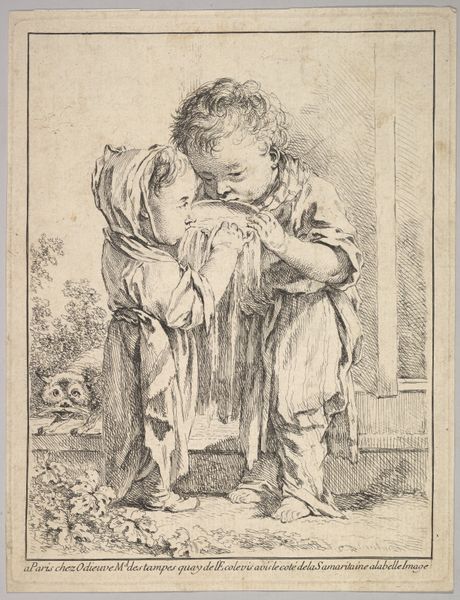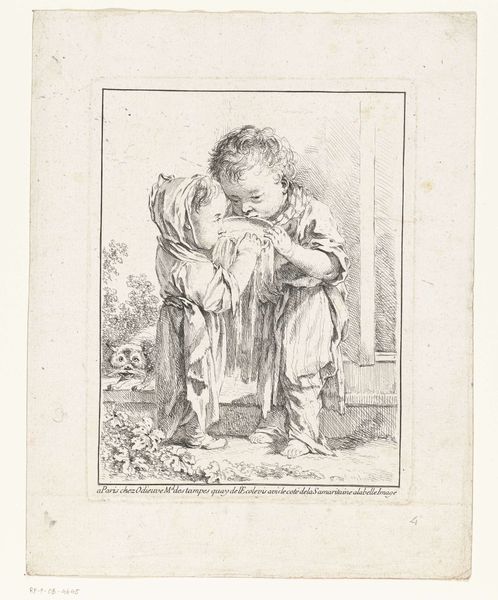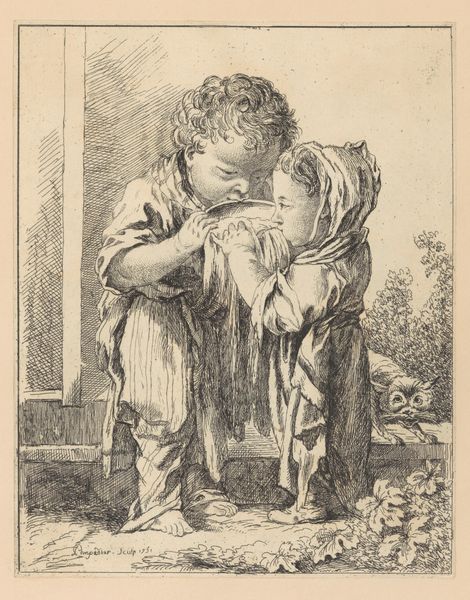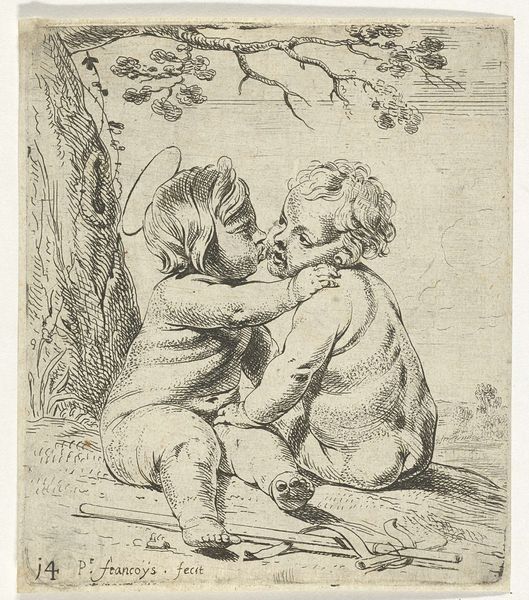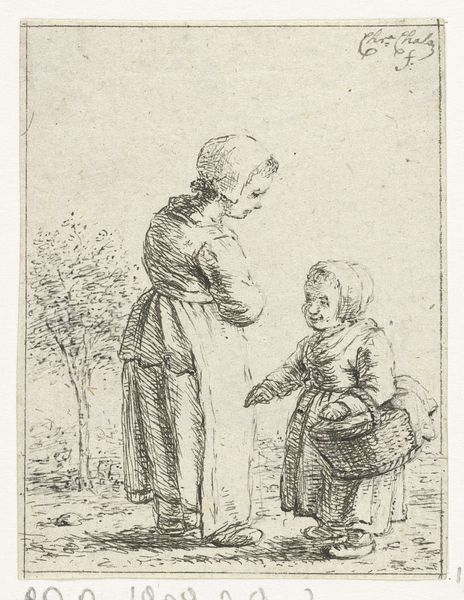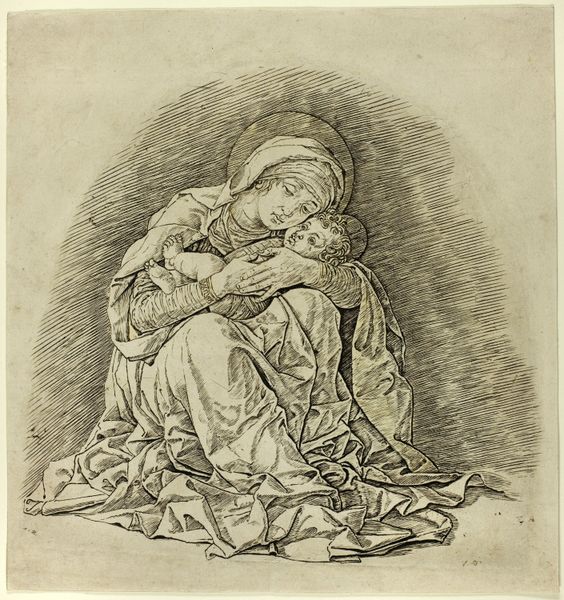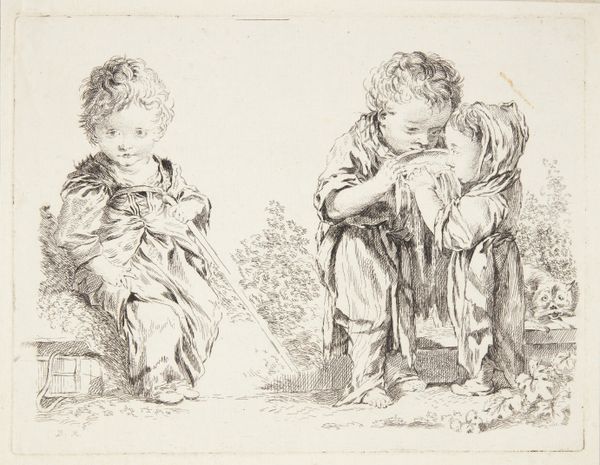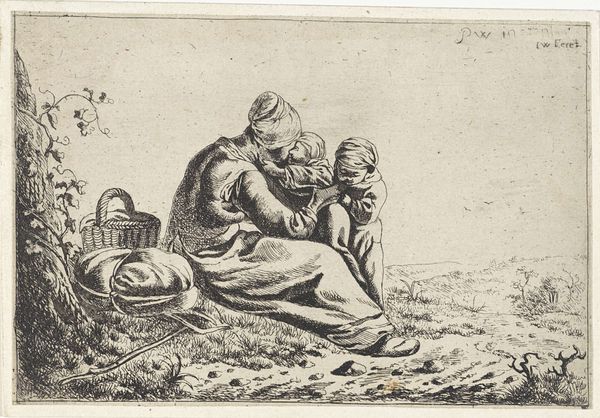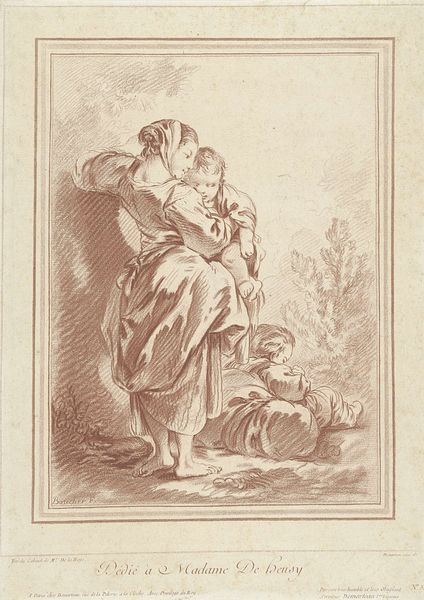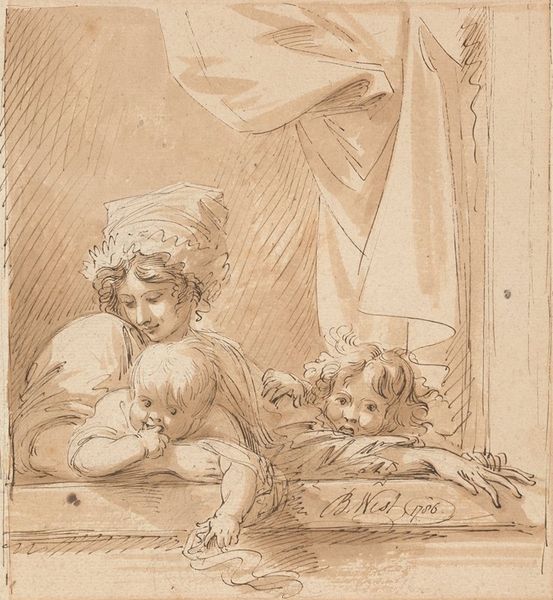
print, etching
#
baroque
# print
#
pen sketch
#
etching
#
pencil sketch
#
figuration
#
child
#
genre-painting
Dimensions: height 190 mm, width 139 mm
Copyright: Rijks Museum: Open Domain
Curator: Here we have "Two Children Eating," an etching by Anna Folkema, dating back to 1748. It immediately strikes me as a study of youthful innocence rendered in deceptively simple lines. Editor: My first impression is one of intimacy. There is an overwhelming concentration of the figures' gestures within the composition's structure. It draws you right in, making you a bystander to this very private scene. Curator: Precisely. Looking closer, the stark, almost crude nature of the etching seems to deliberately counterpoint the sentimentality one might expect from a portrayal of children. Folkema here subverts typical notions about representing innocence during her time. Are the children working? Are they being deprived? The viewer can infer numerous class-conscious interpretations. Editor: Agreed. I'm drawn to the raw quality of the lines—they aren’t perfectly smooth or refined, but almost have a haphazard character that lends it an air of immediacy. You see how she uses these simple techniques to highlight their humble attire. What seems spontaneous now probably relied upon deliberate control and artistic awareness. Curator: Furthermore, let's think about gender in Anna Folkema's time and location. Here's a woman depicting these young children, who seem so innocent at first glance. Was she subtly engaging in a commentary on domesticity or the social expectations of women in the Baroque period, presenting the child as pure? I do see so much possibility in this relatively spare portrayal. Editor: And I’d add that the medium itself—etching, as a readily reproducible method of image production—speaks to this. It connects directly with a world of practical application, suggesting it was intended for consumption within a particular type of economy, which might contrast heavily with the emotional nature of the artwork. Curator: Definitely, it suggests that in a print like this, Folkema was conscious of engaging with societal standards concerning labor, poverty, and expectations around femininity and girlhood in her contemporary world. This makes the artwork richer and offers many questions we may want to ask when regarding art of this period. Editor: Agreed. The seemingly casual nature of this work reveals considerable sophistication when you start examining both its making and its place in time. Curator: Exactly, examining these historical materials lets us think critically about cultural beliefs then and how they continue to show up now. Editor: For sure! Material really reveals social insight.
Comments
No comments
Be the first to comment and join the conversation on the ultimate creative platform.
